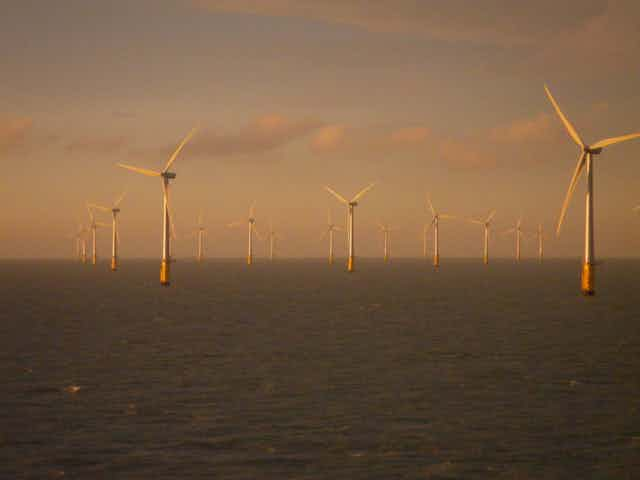Wind turbines could provide a front-line defence against cyclones and hurricanes, by slowing damaging winds and reducing storm surges.
New modelling, published today in Nature Climate Change, shows large arrays of thousands of wind turbines could theoretically cut wind speeds by nearly 150 kilometres per hour and reduce storm surges by 79%.
The study modelled recent US hurricanes — Katrina in 2005 and Sandy in 2012 — and how their impacts might be mitigated by wind turbines. There was a close match between the modelled hurricanes, and wind speeds and storm tracks recorded during the storms.
Peak wind speeds during Hurricane Katrina were reduced by 130-160 kilometres per hour when wind turbines were included in the models, while winds during Hurricane Sandy were reduced 130-140 kilometres per hour.
Professor Cristina Archer, author on the study from University of Delaware, explained:
“It is well known that wind turbines reduce the winds locally and downwind. This is because the turbine converts the motions of air into the motion of the blades (and then the spinning of the generators). This transfer of momentum basically means that the air flow is left with less energy and therefore with lower winds.”
Professor Mark Jacobson from Stanford University, who developed the wind turbine model over two decades, expanded:
“Local wind speed reductions reduce wave heights, which reduces friction, which reduces the redirection of air toward the centre of the hurricane, which reduces air spiralling up in the eye wall, which reduces divergence aloft, which increases central pressure, which reduces the pressure gradient in the hurricane, which reduces overall wind speeds in the hurricane.”
Reducing wind speeds also reduces storm surges — which caused significant damage during Katrina and Sandy. The models found storm surges in Hurricane Katrina could have been reduced up to 79%, while surges during Hurricane Sandy up to 34%.

The study modelled hundreds of thousands (up to 543,000) of wind turbines off the coast, a number Professor Archer said is “not practical”, adding that further research is needed to find the minimum practical number.
The study modelled lower numbers of turbines and still found a significant reduction in hurricane impacts. Professor Jacobson suggested 20,000-40,000 turbines for moderate to high reductions in wind speed and storm surges. Currently, the largest offshore wind farm is the London Array, consisting 175 turbines.
The researchers also tested the cost of building wind turbines versus the avoided costs of hurricane damage. At a cost of US9.4c per kilowatt per hour, wind turbines avoided up to US0.68c per kilowatt per hour of damage in New Orleans, and US0.13c per kilowatt per hour along the US eastern coast. When other costs were factored in, building extra wind turbines cost US4c per kilowatt per hour — cheaper than costs for fossil fuels.
The authors propose wind turbines as a more cost-effective solution than building sea walls, as proposed for defending New Orleans from storm surges following Hurricane Katrina.
A wall of wind turbines for Australia?
But Australian experts question the practicality of building thousands of wind turbines in cyclone-prone areas of Australia.
Dr Nigel Martin at Australian National University, who has studied renewable energy in Queensland, said the key is likely to be the speed at which wind turbines can run.
“Turbines need to operate at safe speeds otherwise – like we saw in Scotland on 8 December 2011 – they will cook the generator wiring. Those speeds were up near 73 metres per second [262 kilometres per hour]. Cyclone Larry was doing 67 metres per second [241 kilometres per hour] when it made landfall in north QLD and Cyclone Ingrid was doing 62 metres per second [223 kilometres per hour] when it made landfall.”
The study modelled wind turbines that could handle speed up to 180 kilometres per hour. Dr Martin said a wind turbines would need more robust generators and blades to handle higher wind speeds.
There would be significant social and political hurdles to cross in building wind turbines off the coast of Queensland. Dr Martin said concerns about aesthetics, tourism, and indigenous land would be a stumbling block — particularly as modelled turbines were within 100 kilometres of the coast.

